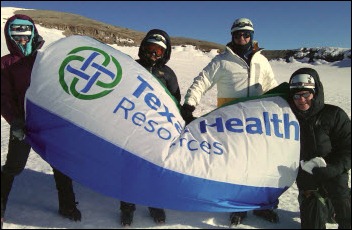CIO Unplugged 10/24/12
The views and opinions expressed in this blog are mine personally and are not necessarily representative of current or former employers.
CIO, Wake Up and Lead
Alexander the Great, one of the greatest military generals who ever lived, conquered almost the entire known world with his vast army. As the story goes, one night during a campaign, he couldn’t sleep. He left his tent to walk the campgrounds.
He came across a soldier asleep on guard duty – a serious offense. The penalty for sleeping on guard duty was, in most cases, death.
The soldier began to wake up as Alexander the Great approached. Recognizing who stood before him, the young man feared for his life.
Alexander the Great looked down at the soldier. “Do you know what the penalty is for sleeping on guard duty?”
“Yes, sir.” The young man’s voice quivered.
His features hardened, and Alexander the Great put a hand on his hilt. “What’s your name, soldier?”
“Alexander, sir.”
Alexander the Great studied the young man with a searing gaze. “What is your name?”
“My name is Alexander, sir.” The soldier’s knees shook.
A third time, Alexander the Great demanded with force, “What is your name?”
Breathing heavily, the young man replied, “My name is Alexander, sir.”
Alexander the Great then came face to face with an intense look. “Soldier, either change your name or change your conduct.”
True or not, the story brings out the point that it’s our duty to walk in the authority of our calling. As CIOs, we continually lobby for our voice at the table. We want to be seen and treated as a peer by our C-suite counterparts.
After interviewing several CEOs and CIOs, I wrote a post for Modern Healthcare last summer about this precise dilemma. In our quest to be recognized by the first letters of our title – typically VP (vice president) or SVP (senior vice president) — we ultimately back down when opportunity presents itself.
A few notable exceptions exist. We all know CIOs who lead business areas of their organizations such as human resources, strategy, finance (yes, finance), and construction, or have gone on to become CEOs. But these are absolute rarities.
Here is a quick pulse check to figure out which one you are:
- Are you presently leading something outside of IT?
- Do you speak as a business person or a techie?
- Do you routinely showcase the business value of IT investments?
- Are you known to resolve challenges or do you run for cover?
- Do you frequently say, “There is no such thing as an IT project” and punt responsibility?
- Do you tell people you “lead from behind?”
Let’s take an example many can relate to. Most CIOs are already on an EHR journey or preparing to embark on one. What an opportunity to lead! Certainly you are not to lead alone, but nor should you abdicate your leadership on this one. And here lies the irony. The majority of troubled EHR initiatives were not led by CIOs, yet the CIO was often the first to go.
Don’t get caught up in my specific example, but rather the heart of the situation described. You might as well take the lead whenever available, because one way or another — despite your best attempt to disassociate — the CIO is integral to almost every action taken by the business. You will take the fall! I advocate that you lead alongside, not in front or behind.
What factors position you so that the coach puts you in the game?
- Excellence. Ensure your credibility is rock solid based on the operational performance of your team. The trains must run on time.
- Intentionality. Have a routine in place where you are getting face time with your peer suite. Throw in a mix of one-on-one time.
- Transparency. Operate and conduct your interactions as openly as possible. Build your own site where peers can get self-help information on what’s taking place in your areas. Publish your budget and show the costs for supporting each business unit down to the application level. Give no one reason to accuse you of hiding anything.
- Knowledge. Success is predicated upon continuous learning. Read the materials popular with your C-suite peers, not just IT.
- Potted or planted. Are you and your directs potted in the organization or planted? When planted, it is hard to tell IT from any other business unit because of the purposeful integration. I want the business units to think my directs work for them. If potted, not planted, the plant does not take root, and eventually withers and dies.
- CEO agenda. Know the agenda of your CEO and your peers and you will start connecting the dots between business strategy and IT. You will become a trusted advisor.
How can you turn to broaden your insights?
- Networking. Continuous interactions with other business leaders, inside and outside of healthcare.
- External connections. Leverage other influences by serving on advisory boards and universities. We bring my team together with IT leadership from a non-healthcare organization annually (see a previous post). i.e. Last month we compared notes with Kimberly-Clark.
- Partnerships. Leverage your organizations partnerships with other companies and vendors. We bring our strategic partners together routinely to learn and grow.
We are all set to lead. Here are some critical success factors to consider:
- Passion. It is contagious. No passion = no energy, and nobody wants to follow a lifeless leader.
- Visibility. Be seen and heard. We rotate our leadership meetings inside of all of our business units. Each time, business and clinical leaders are our special guests, and they are excited to see us on their turf.
- Trust. You know the old adage: do what you say you will do. It’s tough to build trust, yet that trust so easily falls when we stray from the truth.
- Boldness. Being a CIO is not for the faint of heart. Based on advice from my new team, I stopped an EHR implementation so we could regroup before the project went south. This timeout paved the way for a very successful implementation and enabled the kind of returns we had originally hoped for.
Let me close by asking you: what is your name? Or better yet, what is your title? If you are not leading, then downgrade your title. Either start acting like a vice president or senior vice president or give someone else the opportunity. Healthcare is desperate for strong leaders, especially CIOs.

Ed Marx is a CIO currently working for a large integrated health system. Ed encourages your interaction through this blog. Add a comment by clicking the link at the bottom of this post. You can also connect with him directly through his profile pages on social networking sites LinkedIn and Facebook and you can follow him via Twitter — user name marxists.














"A valid concern..." Oh please. Everyone picks the software they like and the origin of that software is an afterthought.…